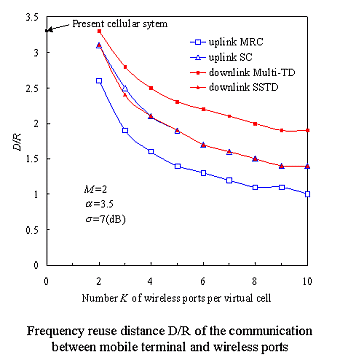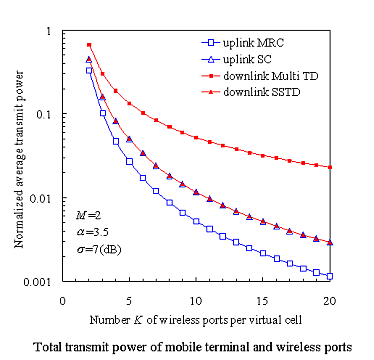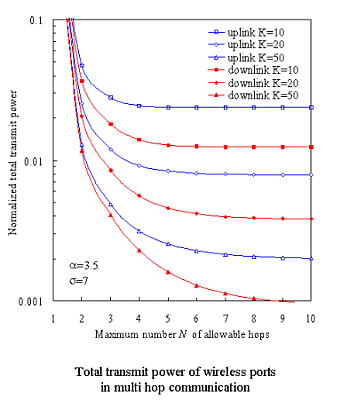Contents
- Current research outline (from Apr. 2016)
- Research outline (until Mar. 2016)
Current research outline (from Apr. 2016)
Aiming at contributing to the realization of 5G and beyond from academic side, we at the Wireless Signal Processing Research Group, Tohoku University Research Organization of Electrical Communication (ROEC), have been conducting an intensive research into distributed MIMO cooperative transmission and autonomous distributed radio resource management.
Our research on the distributed MIMO cooperative transmission aims at significantly improving the spatial spectrum- and energy-efficiencies simultaneously. They include single-user space-time coded transmit diversity, multi-user spatial multiplexing, transmit signal peak-to-average power ratio (PAPR) suppression, multi-user scheduling (or adaptive 2-dimensional (time-frequency) dynamic resource allocation), channel equalization, channel estimation, etc.
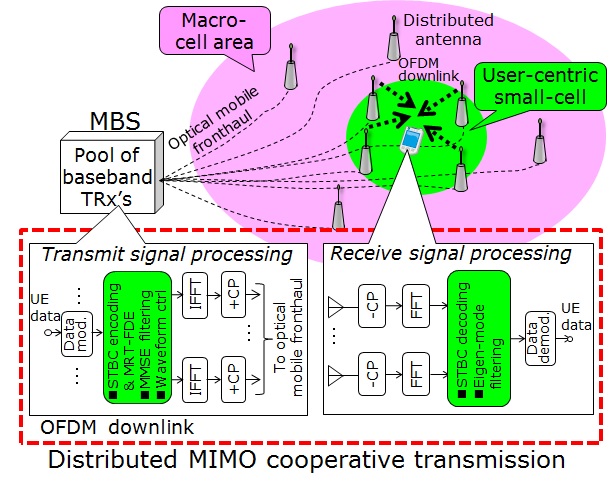
Our recent results and publications are provided as follows
- F. Adachi, K. Takeda, T. Obara, T. Yamamoto, and H. Matsuda, “Recent advances in single-carrier frequency-domain equalization and distributed antenna network,” IEICE Trans. Fundamentals, Vol.E93-A, No.11, pp.2201-2211, Nov. 2010.
- F. Adachi, K. Takeda, T. Yamamoto, R. Matsukawa, and S. Kumagai, “Recent advances in single-carrier distributed antenna network,” Wireless Commun. and Mobile Computing, Volume 11, Issue 12, pp. 1551-1563, Dec. 2011, DOI: 10.1002/wcm.1212.
- F. Adachi, W. Peng, T. Obara, T. Yamamoto, R. Matsukawa and M. Nakada, “Distributed antenna network for gigabit wireless access,” International Journal of Electronics and Communications (AEUE), Vol. 66, Issue 6, pp.605-612, 2012.
- F. Adachi, A. Boonkajay, Y. Seki, T. Saito, S. Kumagai, and H. Miyazaki, “Cooperative Distributed Antenna Transmission for 5G Mobile Communications Network,” IEICE Trans., Vol.E100-B, No.8, pp.-, Aug. 2017. http://doi.org/10.1587/transcom.2016FGP0019.
Our research on the autonomous distributed radio resource management aims at adaptive and scalable management of scarce radio spectrum and energy in the era of dense heterogeneous wireless networks to be deployed in 5G and beyond. It includes channel allocation which can avoid serious co-channel interference (CCI) by learning the CCI environment and game theory-based autonomous distributed on/off switching of base station (BS) or access point (AP) according to the requested traffic.

Our recent results and publications are provided as follows
- A. Mehbodniya and F. Adachi, “Decentralized Radio Resource Management for Dense Heterogeneous Wireless Networks,” Chap. 5 in Vincent W. S. Wong, et al.,“Key Technologies for 5G Wireless Systems” (ISBN: 9781107172418), Cambridge University Press, March 2017.
- Ren Sugai, Abolfazl Mehbodniya and Fumiyuki Adachi, “Interference-Aware Channel Segregation based Dynamic Channel Assignment in HetNet,” IEICE Communications Express (Advance Publication), May 27, 2016. DOI: http://doi.org/10.1587/comex.2016XBL0078.
Research outline (until Mar. 2016)
Introduction
The future wireless network is expected to support very high data rates in the range of 100Mbps-1Gbps. We are pursuing research on Gigabit wireless communications technologies for the realization of such high speed wireless network. Wireless signal processing and wireless network are the two wide areas encompassed.
The main objective of wireless signal processing research is to overcome the influence of strong frequency selective fading. To mitigate the effects of frequency selective fading, we carry out research on various signal processing technologies including multicarrier CDMA (MC-CDMA), direct sequence CDMA (DS-CDMA), frequency domain equalization, space time coding transmit diversity, turbo coding, hybrid ARQ, transmit power control and adaptive channel estimation.
In the area of wireless network, we have proposed a virtual cellular network with suppressed peak transmit power that is a major problem with high speed networks. Virtual cellular system is composed of many distributed wireless ports and a central port, that correspond to the base station of the present day cellular systems, which form a gateway to the network. Research topics includes wireless multihop, multihop route construction, dynamic resource (power, frequency) allocation, etc. for the transmission of the signal received by the wireless port closest to the mobile terminal to the central port.

Wireless signal processing
Research topics
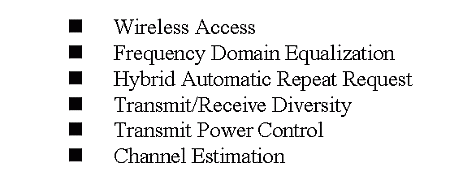

Frequency-domain equalization
Rake combining is used in a conventional DS-CDMA. However, as the number of propagation paths increases, the BER performance significantly degrades due to increasing inter-path interference (IPI). We have proposed the application of frequency-domain equalization (FDE), used in MC-CDMA, to DS-CDMA in order to restore the code othogonality while achieving frequency diversity effect. [1,2,3].
- F. Adachi, T. Sao, and T. Itagaki, “Performance of multicode DS-CDMA using frequency domain equalization in a frequency selective fading channel,” IEE Electronics Letters, vol. 39, No.2, pp. 239-241, Jan. 2003.
- T. Itagaki and F. Adachi, “Joint frequency-domain equalization and antenna diversity combining for orthogonal multicode DS-CDMA signal transmissions in a frequency-selective fading channel,” Proc. 6th International Symposium on Wireless Personal Multimedia Communications (WPMC), vol.1, pp.285-289, Yokosuka, Japan, 19-22 Oct. 2003.
- T. Itagaki, T. Sao, D. Garg, and F. Adachi, ” Chip interleaved multicode DS-CDMA with MMSEC in a frequency nonselective fading channel,” IEICE Trans. Commun., vol. E87-B, No. 1, pp.79-87, Jan. 2004.

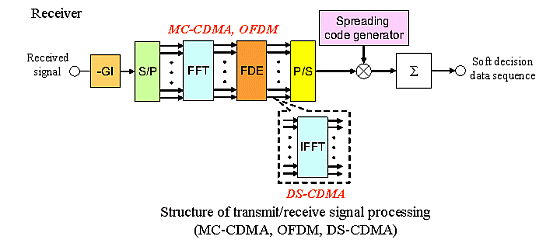
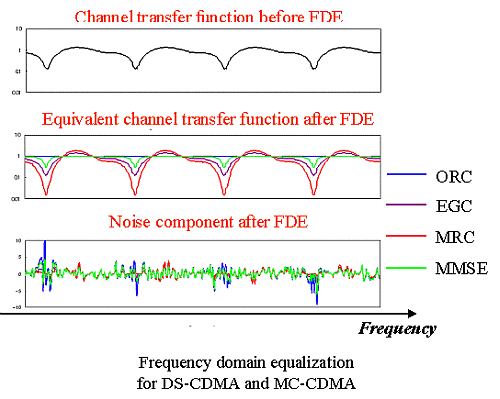
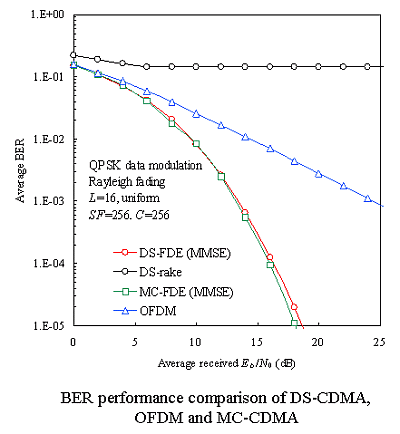
Hybrid automatic repeat request
Broadband wireless packet technology is one of the core technologies for 4th generation systems. With packet data communication, automatic repeat request (ARQ) is essential for error control. We incorporate turbo coding into HARQ to improve the throughput performance in a frequency selective fading channel [1,2].
- D. Garg, R. Kimura, and F. Adachi, “RCPT hybrid ARQ with limited number of retransmissions in a DS-CDMA mobile radio,” IEE Electronics Letters, vol. 39, No.2, pp. 241-242, Jan. 2003.
- D. Garg and F. Adachi, “Application of rate compatible punctured turbo coded hybrid ARQ to MC-CDMA mobile radio,” Proc. 8th International Conference on Cellular and Intelligent Communications (CIC), p.364, Seoul, Korea, 28-31 Oct. 2003.
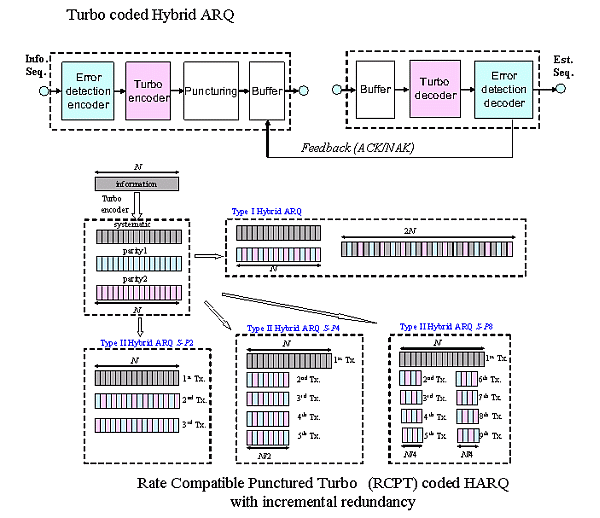
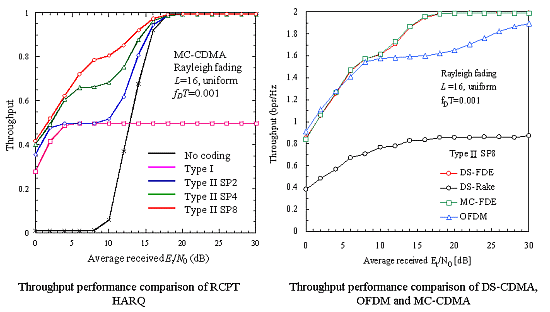
Transmit/receive diversity
Frequency-domain equalization for DS-CDMA can achieve better bit error rate (BER) performance than rake combining in a severe frequency-selective fading channel. To improve the BER performance furthermore, an application of multi-antenna transmit/receive diversity is promising. We combine Alamouti’s space-time transmit diversity (STTD) and frequency-domain equalization in addition to antenna diversity reception [1,2].
- K. Takeda, T. Itagaki, and F. Adachi, “Joint frequency-domain equalization and multiple transmit/receive antenna diversity for DS-CDMA,” Proc. The 1st IEEE VTS Asia Pacific Wireless Communications Symposium (APWCS), pp.144-147, Hoam Convention Center, Seoul National University, Seoul, Korea, 8-9 Jan. 2004.
- K. Takeda, T. Itagaki, and F. Adachi, “Space-time transmit diversity combined with frequency-domain equalization for single-carrier transmission,” Proc. 6th International Symposium on Wireless Personal Multimedia Communications (WPMC), vol.3, pp.390-394, Yokosuka, Japan, 19-22 Oct. 2003.
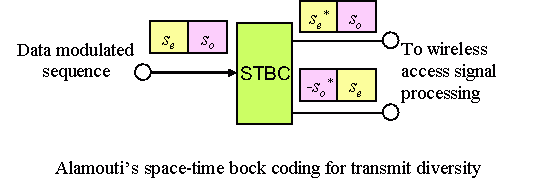
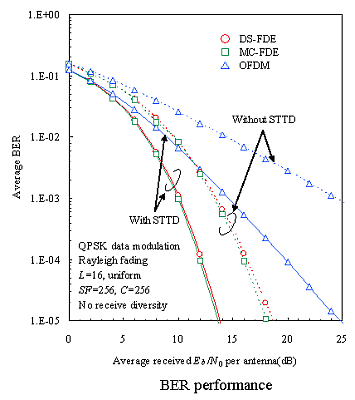
Transmit power control
In a packet mobile communication, the packet with larger power can survive when packets collide. This is known as the capture effect. In DS-CDMA, transmit power control (TPC) and rake combining are necessary. However, as the number of propagation paths increases, the received power variations become shallower due to the increased effect of rake combining and thus, the capture effect obtainable by slow TPC decreases. We have proposed a new TPC called random TPC in order to obtain a sufficiently large capture effect for DS-CDMA packet mobile radio [1,2].
- Z. Wang, E. Kudoh, and F. Adachi, “Uplink link capacity of DS-CDMA packet mobile communications with Rake combining and transmit power control,” IEICE Trans. Commun., vol. E86-B, no.7, pp. 2203-2206, July 2003.
- Z. S. Wang, E. Kudoh, and F. Adachi, “Transmit power control using probabilistic target for DS-CDMA packet mobile radio,” Proc. 6th International Symposium on Wireless Personal Multimedia Communications (WPMC), vol.3, pp.266-270, Yokosuka, Japan, 19-22 Oct. 2003.

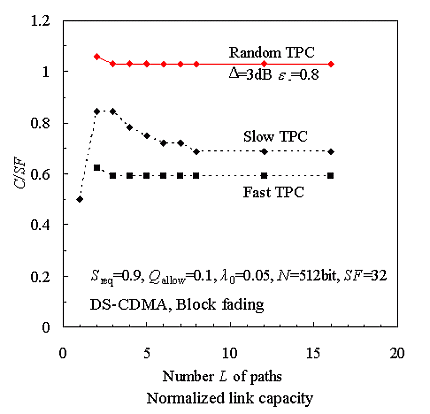
Channel estimation
For coherent detection of OFDM signals, accurate channel estimation is necessary. However, multipath propagation condition between the transmitter and receiver changes according to user’s movement. Therefore, the channel estimation scheme using the time-invariant tap weights cannot always minimize the bit error rate (BER) in changing propagation environments. We have proposed a frequency-domain adaptive prediction channel estimation. Adaptive prediction filtering is incorporated into channel estimation process. The filter tap weights are adaptively updated according to changes in the multipath propagation environment [1].
- S. Takaoka and F. Adachi, “Adaptive prediction iterative channel estimation for OFDM signal reception in a frequency selective fading channel,” Proc. 57th IEEE Vehicular Technology Conference (VTC), pp. 1576-1580, Jeju, Korea, 22-25 April, 2003.
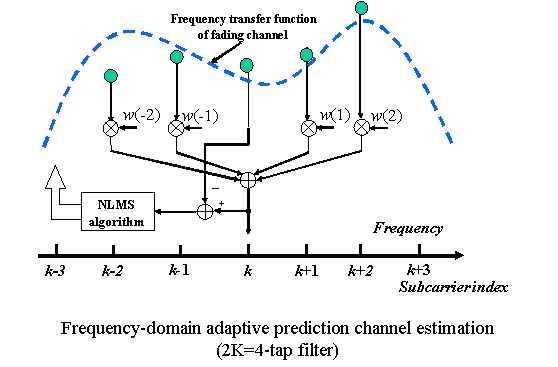
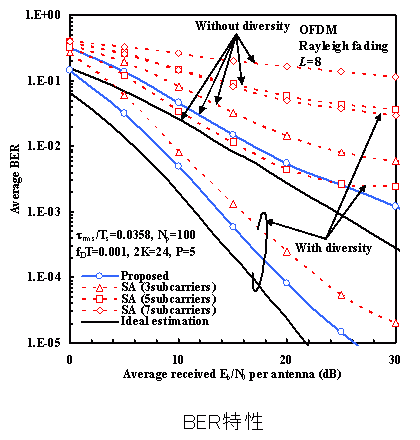
Wireless networking
Research topics

Problem of present cellular sysytem
Very high rate data transmission requires large peak transmit power. Reducing the cell size is an efficient way to avoid larger peak power, but significantly increases the control traffic for location registration and handover. To avoid this problem, we have proposed a virtual cellular concept [1,2].
- F. Adachi, “Wireless past and future – evolving mobile communications systems,” IEICE Trans. Fundamentals, vol. E84-A, pp.55-60, Jan. 2001.
- E. Kudoh and F. Adachi, “Power and frequency efficient virtual cellular network,” Proc. 57th IEEE Vehicular Technology Conference (VTC), pp.2485-2489, Jeju, Korea, 22-25 April, 2003.

Virtual cellular system
Many wireless ports are distributed in each virtual cell. One of the wireless ports distributed in each virtual cell acts as a gateway (this is called the central port) to the network, similar to a base station in the present cellular systems. A mobile terminal communicates with multiple wireless ports simultaneously.
If all wireless ports communicate with the central port directly, the transmit powers of some wireless ports may become very large due to path-loss, shadowing loss, and multipath fading. To avoid this, wireless multi-hop is applied. The virtual cell control layer is inserted between the data link layer and the network layer [1].
- E. Kudoh and F. Adachi, “Power and frequency efficient virtual cellular network,” Proc. 57th IEEE Vehicular Technology Conference (VTC), pp.2485-2489, Jeju, Korea, 22-25 April, 2003.

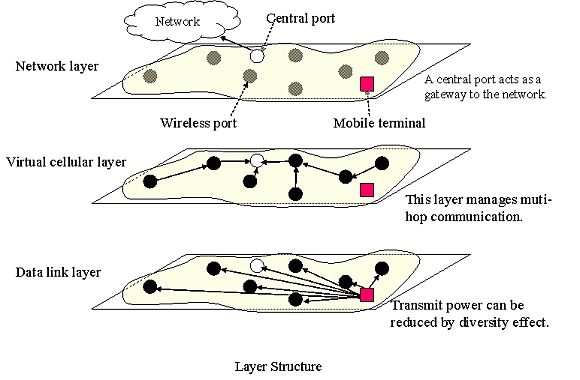
Multi hop communication
The central wireless port and a mobile terminal is connected via distributed wireless ports using wireless multi-hop. We have proposed the route construction scheme based on total transmit power minimization criterion. After all multi-hop routes over distributed wireless ports are constructed, the channel segregation DCA is carried out to allocate the channels to the up/down links along the multi-hop routes [1,2].
- E. Kudoh and F. Adachi, “Study of a multi-hop communication in a virtual cellular system,” Proc. 6th International Symposium on Wireless Personal Multimedia Communications (WPMC), vol.3, pp.261-265, Yokosuka, Japan, 19-22 Oct. 2003.
- E. Kudoh and F. Adachi, “Performance of distributed dynamic channel assignment for a multi-hop virtual cellular system in multipath fading channel,” IEICE Technical Report, RCS2003-336, pp.19-23, March 2004.

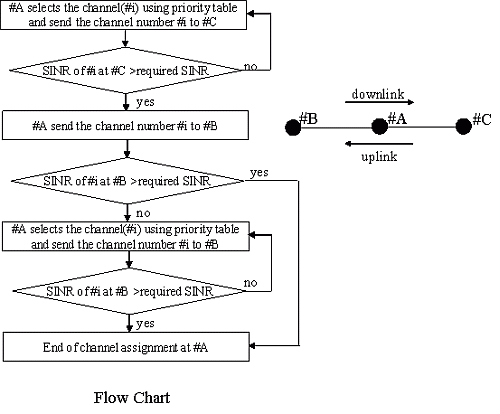
Transmit power and frequency efficiencies
The transmit power and frequency efficiencies of the virtual cellular system were evaluated by Monte Carlo simulation to show that the virtual cellular system can considerably reduce the transmit power. Reducing the transmit power contributes to reducing the frequency reuse distance. Even in TDMA, the same frequency can be reused within the same virtual cell [1,2].
- E. Kudoh and F. Adachi, “Power and frequency efficient virtual cellular network,” Proc. 57th IEEE Vehicular Technology Conference (VTC), pp.2485-2489, Jeju, Korea, 22-25 April, 2003.
- E. Kudoh and F. Adachi, “Transmit power efficiency of a multi-hop virtual cellular system,” Proc. 58th IEEE Vehicular Technology Conference (VTC), Orlando, Florida, USA, 6-9 Oct. 2003.
